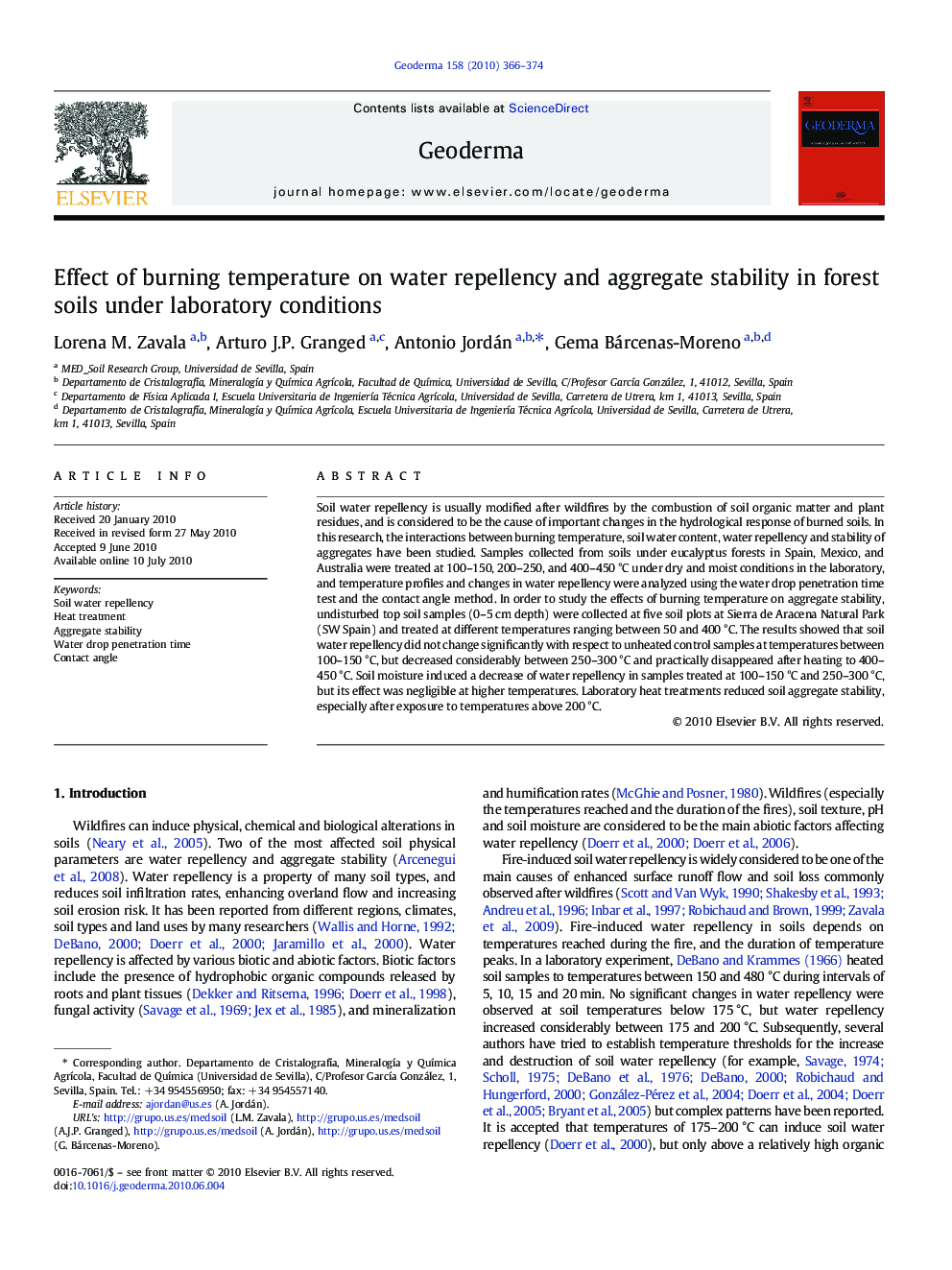| Article ID | Journal | Published Year | Pages | File Type |
|---|---|---|---|---|
| 4574347 | Geoderma | 2010 | 9 Pages |
Soil water repellency is usually modified after wildfires by the combustion of soil organic matter and plant residues, and is considered to be the cause of important changes in the hydrological response of burned soils. In this research, the interactions between burning temperature, soil water content, water repellency and stability of aggregates have been studied. Samples collected from soils under eucalyptus forests in Spain, Mexico, and Australia were treated at 100–150, 200–250, and 400–450 °C under dry and moist conditions in the laboratory, and temperature profiles and changes in water repellency were analyzed using the water drop penetration time test and the contact angle method. In order to study the effects of burning temperature on aggregate stability, undisturbed top soil samples (0–5 cm depth) were collected at five soil plots at Sierra de Aracena Natural Park (SW Spain) and treated at different temperatures ranging between 50 and 400 °C. The results showed that soil water repellency did not change significantly with respect to unheated control samples at temperatures between 100–150 °C, but decreased considerably between 250–300 °C and practically disappeared after heating to 400–450 °C. Soil moisture induced a decrease of water repellency in samples treated at 100–150 °C and 250–300 °C, but its effect was negligible at higher temperatures. Laboratory heat treatments reduced soil aggregate stability, especially after exposure to temperatures above 200 °C.
Research Highlights► Burning temperature under 100–150 °C during 40 minutes does not affect soil water repellency and it is destroyed after exposure to 400–450 °C during the same time. ► A water repellent layer is formed some centimeters below the soil surface after exposure to 100–250 °C during 40 minutes. ► Soil moisture does not affect water repellency after exposure to 400–450 °C during 40 minutes. ► Medium and high intensity wildfires contribute to reduce aggregate stability.
